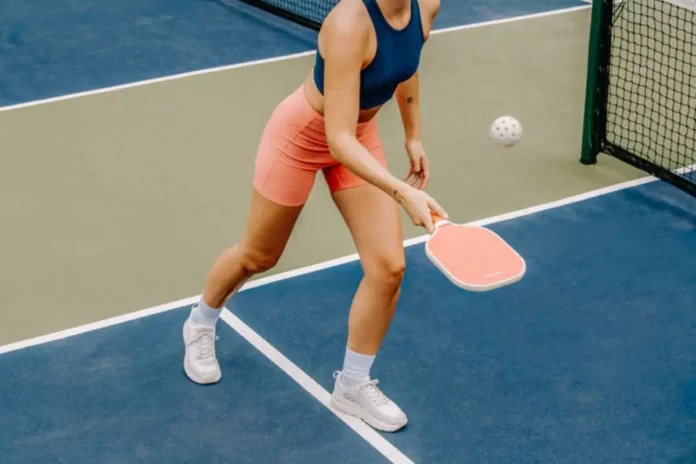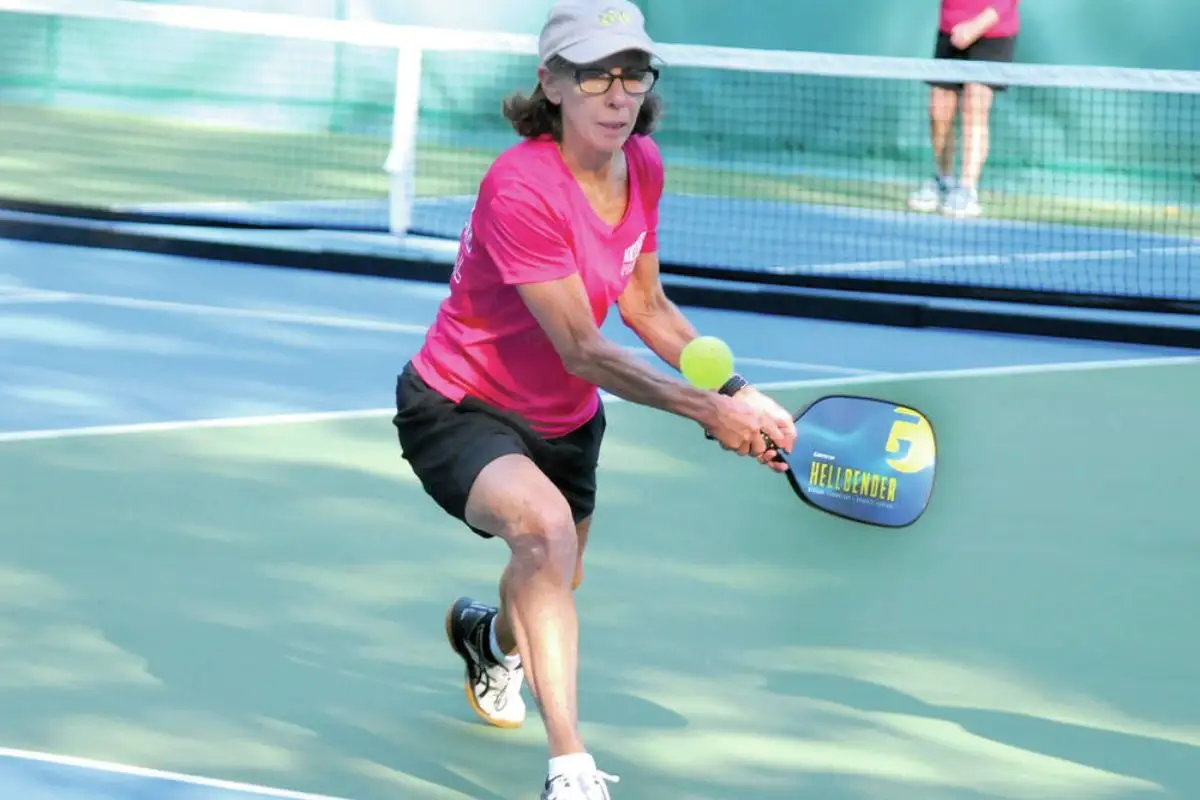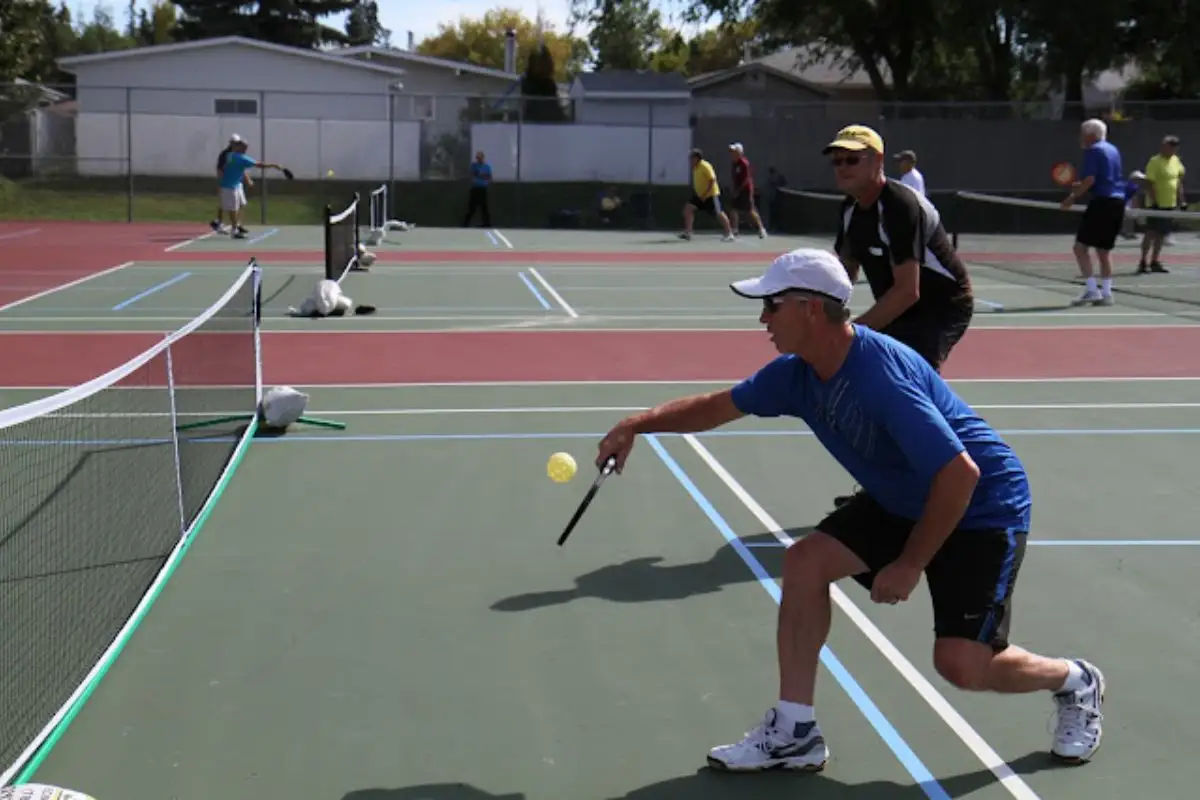Baseline is the Worst Enemy in Pickleball: In pickleball, one thing becomes clear: moving at the baseline often leads to lost points. Yet, time and again, intermediate players at local clubs remain hesitant to advance to the kitchen line, the area where the pros truly shine.
The Downside of Staying Back
Pickleball is a game of control, and the kitchen—officially known as the Non-Volley Zone (NVZ)—is where dominance is established. The team that seizes the Non-Volley Zone first gains a significant edge.
By positioning themselves at the kitchen, players limit their opponents’ shot angles, reduce the court area they must cover, and enhance their chances of executing shots aimed at their opponents’ feet. This strategic advantage often leads to forced errors from the opposing team.
However, a surprising number of players resist this critical movement, either due to a lack of proper coaching or a misplaced sense of security found in staying at the baseline and relying on power shots.
The reality is stark: power players are routinely overwhelmed by more advanced competitors. At higher skill levels, opponents adeptly return hard shots, turning them into a liability rather than an asset.
Confronting the Fear Factor
An underlying issue for many players is the discomfort associated with being at the net. It’s a common sentiment—once up close, the game accelerates. Players grapple with fears of being hit or losing their grip during dink rallies.
This fear is precisely what traps many in the 3.0 to 3.5 skill range. While dinking and executing third-shot drops present a steeper learning curve than simply powering through shots, mastering these pickleball skills is essential for players aspiring to elevate their game.
Here’s the hard truth: staying back is the easy route. Advancing toward the net demands skill, patience, and persistent practice. Players like Andrei Daescu and Anna Leigh Waters don’t rush to the net for sheer thrill; they do so because statistics reveal that 75% of points are won at the kitchen line.
Why Pros Thrive at the Net
Observing professional players reveals a common pickleball strategy: they constantly work their way to the kitchen. Proximity to the net transforms shots into dangerous weapons. As players move closer, the angles expand, and they can unleash attacks with newfound confidence. Each step taken toward the net diminishes the opponent’s opportunity to execute a lob or pass.
Every foot behind the kitchen line opens a door for the opponent to place a shot that might be unreturnable. This is why pros scramble for the Non-Volley Zone from the very first rally—they understand that control of this area is pivotal for winning.
Just watch the dynamic between Anna Bright and Andrei Dadescu as they face off against Ben Johns and Anna Leigh Waters; their rush to the net immediately following the serve is a testament to their strategy.
Avoiding the Trap of Perfection
One critical error made by intermediate players is the habit of waiting for the perfect third-shot drop before advancing. The truth is, perfection is unnecessary.
Even a satisfactory drop should signal a player to begin inching forward. If the drop fails to meet expectations, follow it with a fifth-shot drop. The key is gradual movement toward the net, rather than remaining stationary, waiting for an ideal moment that may never come.
Power Alone Isn’t Enough in Pickleball
While power hitting from the baseline may secure points against beginners, the same strategy falls flat against advanced players. Why? Because bangers—those who rely solely on power—become predictable, and experienced opponents possess the quick hands and reset skills necessary to neutralize raw power.
The kitchen game is rooted in patience, soft hands, and the ability to force errors through precise control, not sheer strength.
Taking Control of the Kitchen
To conquer the kitchen in pickleball, players must first let go of their fear of the net. Practicing third-shot drops and soft dinks during warmups can build comfort when playing closer to the net.
Next, players must commit to moving forward. After their return or third shot, it’s vital to make a deliberate effort to approach the Non-Volley Zone. Instead of lingering back, they should aim to create opportunities rather than waiting for a perfect one.
Lastly, watching opponents’ body language can serve as a valuable cue. When an opponent is forced into a low shot, it indicates a moment of weakness; that’s the time to advance, as they’ll need to play softly, providing ample opportunity to close the gap.
News in Brief: Baseline is the Worst Enemy in Pickleball
Staying at the baseline in pickleball can hinder players’ success, particularly those at the intermediate level. Dominance at the kitchen line in pickleball, or Non-Volley Zone, is crucial for gaining a competitive edge.
Many players remain hesitant to advance due to comfort or fear, yet they miss the strategic advantage that comes with controlling the net. Practicing soft shots and committing to moving forward are essential steps toward elevating gameplay and winning more points.
ALSO READ: Pickleball Terms You Need to Know: Baseline to Kitchen




